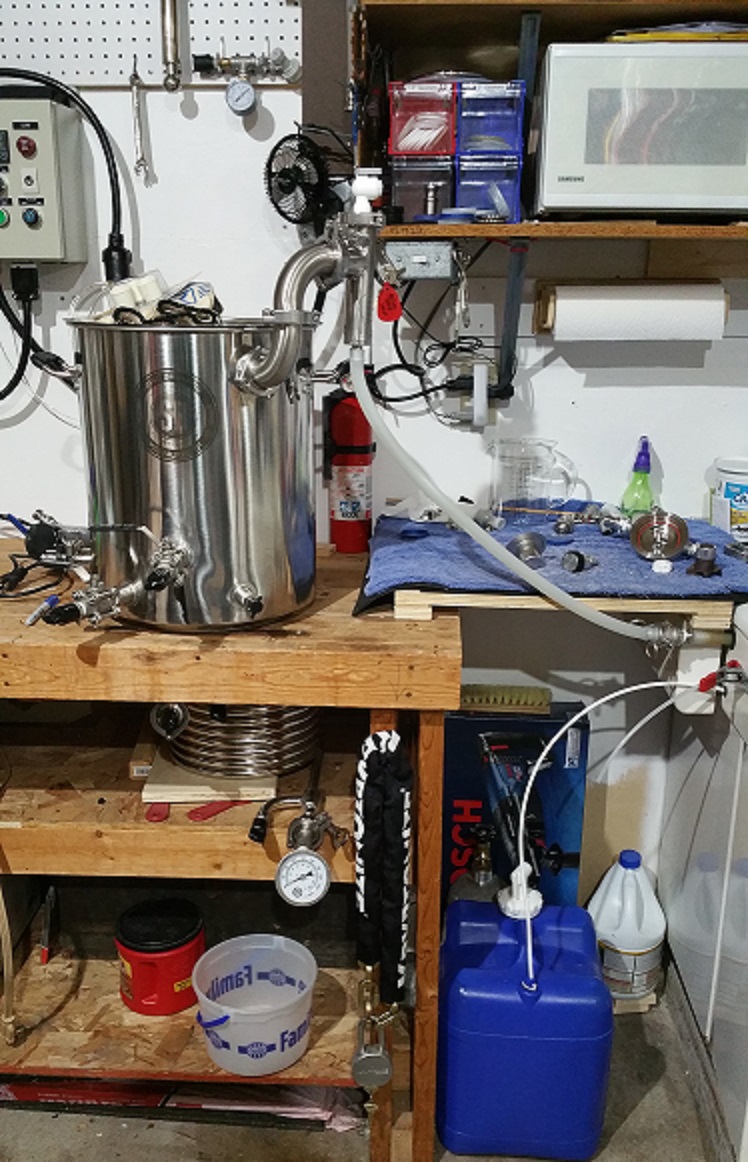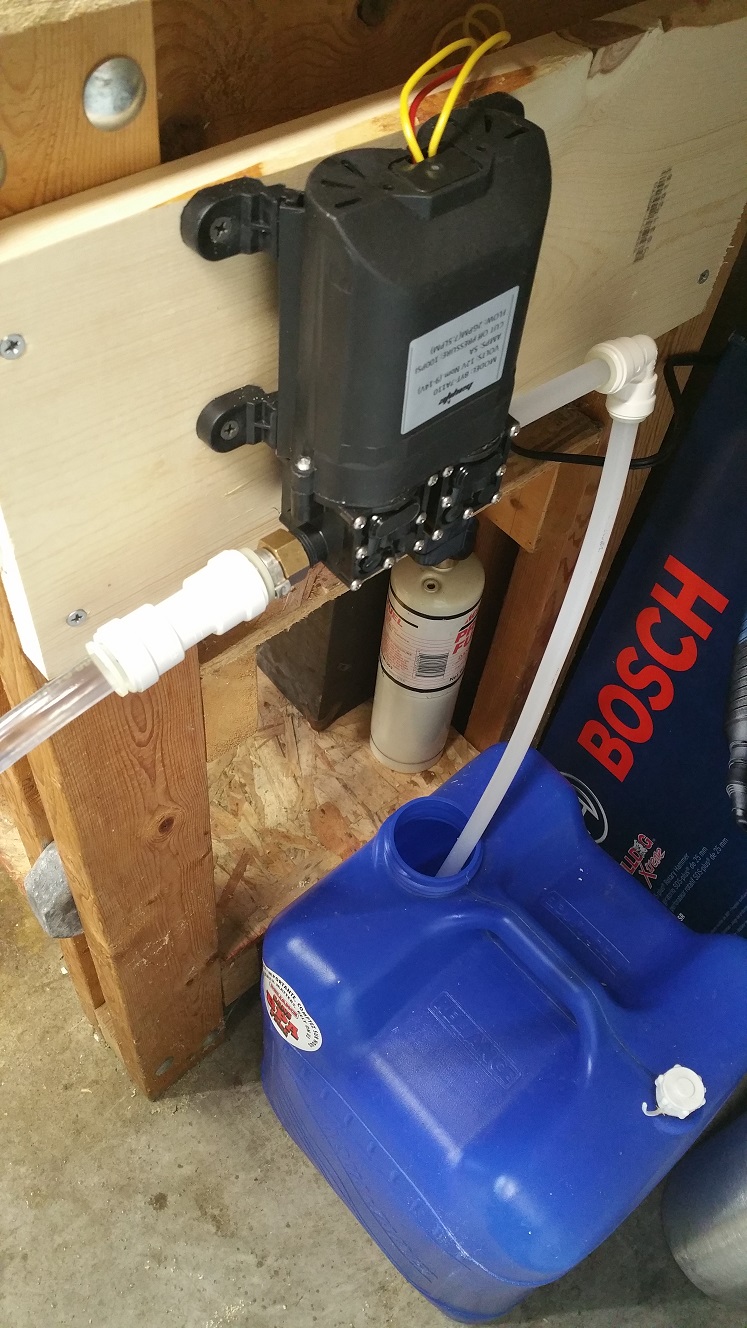Not all have five stages. I think mine has 4.
All will have a wastewater line.
I use mine for brewing....and for a Keurig coffee maker I have in my office. I fill gallon water jugs that held distilled water (never milk jugs, they can't be cleaned properly), and schlep those to the office, or if I need a double-batch brew day and need extra water. There's something like 15 gallons there:

The RO filters aren't fast, at least, my 50 gpd filter does between 1 and 2 gallons per hour. You can get faster and slower filters, rated in gallons-per-day. Mine is 50 gpd. If I did it again, I'd probably opt for a 75 or 100 gpd system. BTW, they work better with softened water, and the warmer the water, the better they work. Really cold water is SLOW.
Here are some pics showing how mine's set up.
Originally, I put a garden hose adapter on the sink to feed the in line to the filter; I hung it on the wall because it's the garage and if it ever got too cold it'd freeze, so I could move it into the house if necessary. Never have, as it turns out.
Here's the sink faucet adapter setup:
Then I installed the filter below the sink to free up more room, and I put the waste line into a trap beneath sink.
Then I drilled a hole, added a rubber grommet, and passed the output line outside the sink.
Then I had a separate hose bib installed so I could run the RO filter and retain the ability to use the sink:
I then doubled down on that supply by using a splitter, one to the RO filter, the other to serve the Steam Slayer I use:
The current setup with not only the output line from the RO filter feeding the Aquatainer I use, but also the feed line for the Steam Slayer and the return effluent line:
Here's the approach used under the sink; I had a separate stand pipe added connected to the trap, and both the waste line from the RO system as well as the effluent line from the Steam Slayer drain into it. The yellow line is the RO waste line.
But I was still concerned about manhandling a 56+ pound container of water given my two back surgeries; I can do it, but I decided over time it wasn't smart. So I added a self-priming pump so I can pump that water from the Aquatainer up to the boil kettle, or feed gallon jugs of RO water to take to my office or double-up a batch for a day:
***********
Now, I'm not saying you should do anything like I have done it--my setup and equipment and such is likely unique, and the solutions I've crafted are ones that fit my own situation.
Use the above to understand it better, and to maybe plan out what would work the best for your situation.
FYI, I bought my RO stuff from Buckeye Hydro. Russ, who posts here from time to time, set me up. I said what I wanted (filter, connection to faucet, etc.) and he set me up with it. I also bought a TDS (total dissolved solids) meter which runs about, IIRC, roughly 28 bucks, which is needed to see when the filter isn't working as well.
I've had mine for, geez, almost 3 years and haven't replaced anything yet. I'm still getting 5 ppm RO water out of it. I've probably produced...oh, maybe 700 gallons of RO water out of it.













